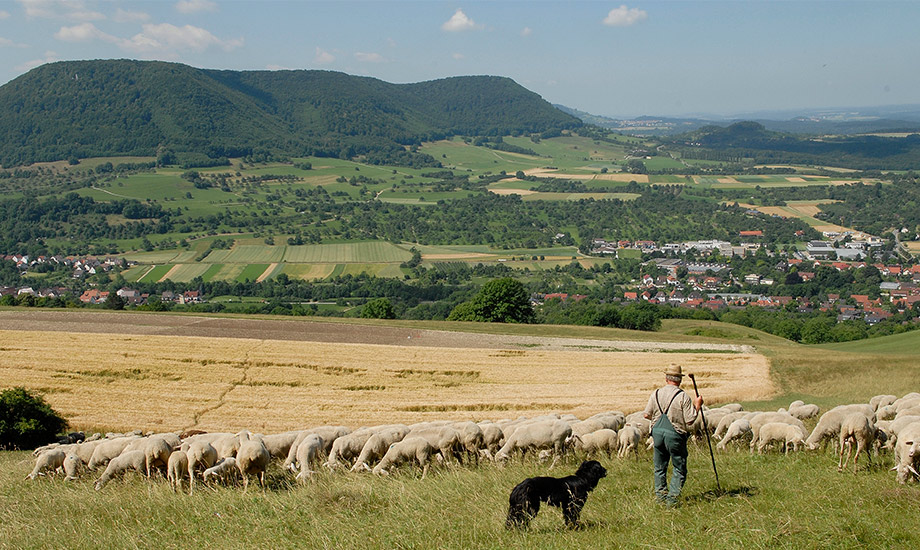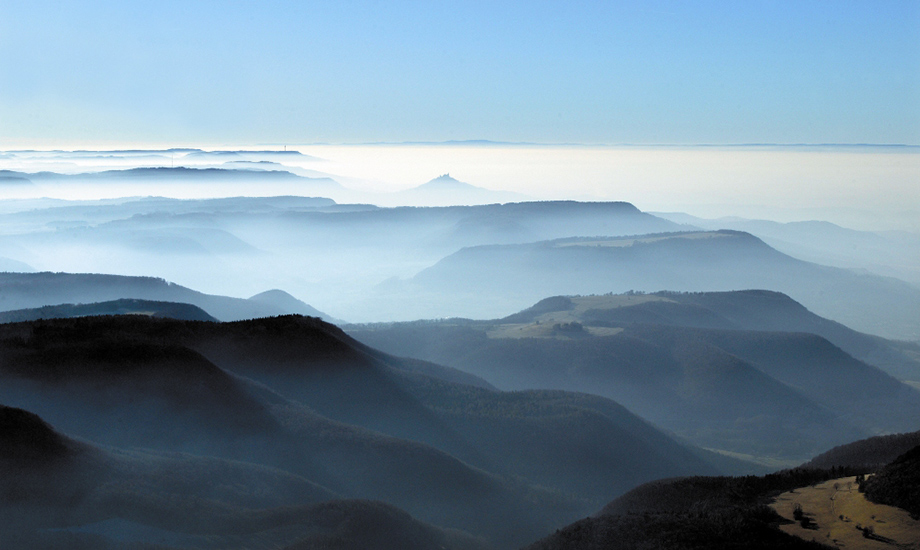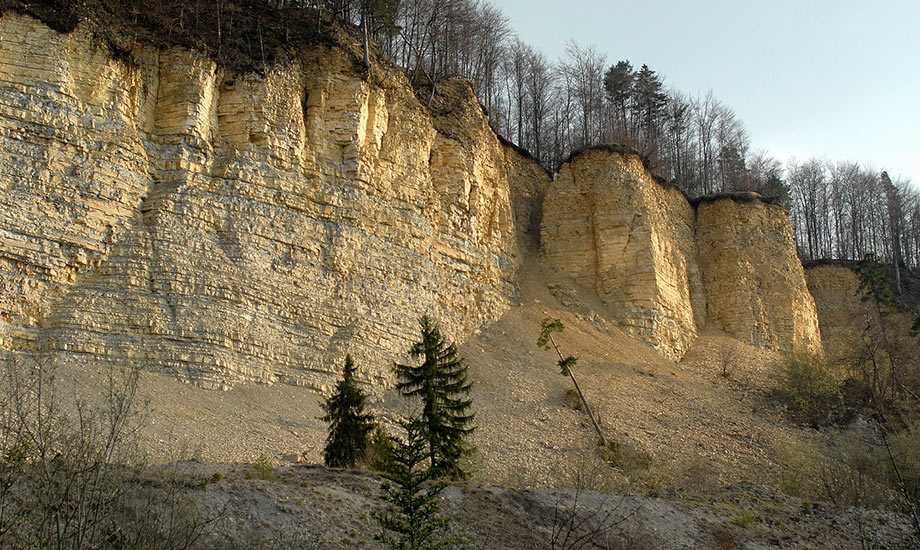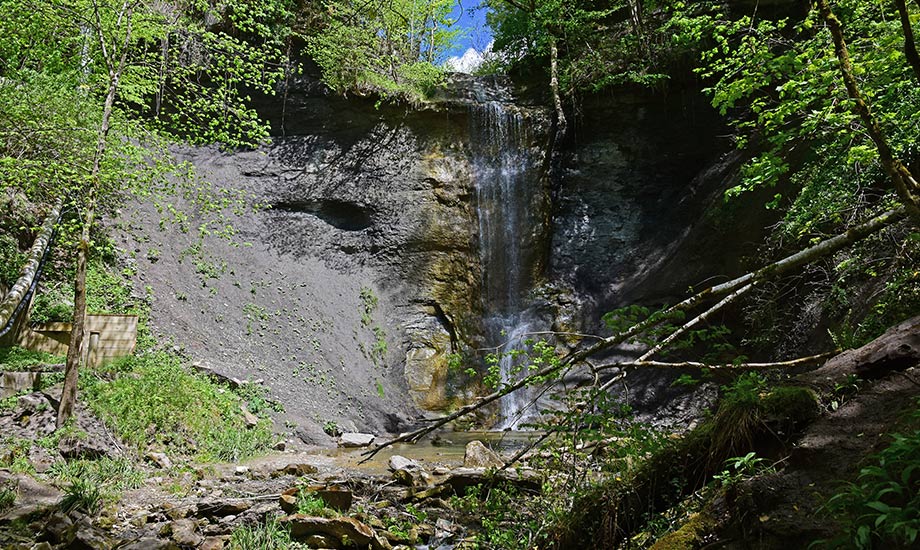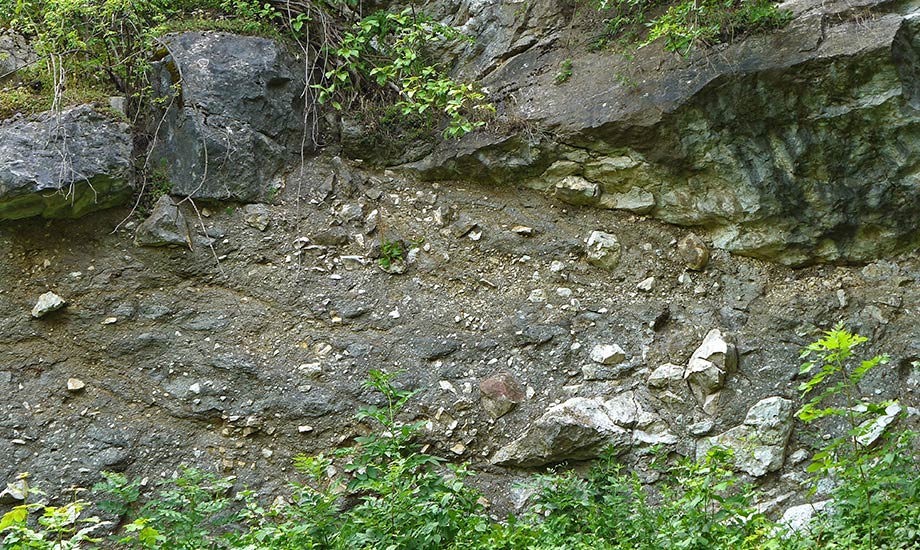Albtrauf with witness mountains
The north-western edge of the Swabian Alb presents a spectacular landscape: rugged rocky ridges form a 300 to 400 metre high escarpment called Albtrauf. It borders the Swabian Alb to the north-west. The Alb plateau consists of the hard limestone layers of the Upper Jurassic and used to extend much further to the northwest. Through erosion, rock on the Albtrauf is continuously eroded, thus shifting it further and further to the southeast. A thick layer of clay at the transition from Upper Jurassic to Middle Jurassic rocks, so-called ornate clay, often forms the sliding horizon for the sliding rock packages on the ridge. Usually this happens slowly and not as spectacularly as in 1983 at the Mössingen landslide, where 4 million square metres of earth and rock moved downhill.
At the foot of the Albtrauf, waterfalls often emerge above damming layers of the Middle Jurassic - the are called "waterfall layers". Due to an alternating sequence of hard, resistant rock layers and layers of softer, clayey material, a step forms as a result of varying degrees of erosion. The water impressively cascades over such steps.
The hills in the landscape to the north-west of the Albtrauf are formed by two different processes. The witness mountains are the remains of the former Alb expansion, which have been preserved until today. Other hills are forms of volcanic origin: the harder rocks of volcanic vents in the subsoil were exposed by erosion.
Witness mountains and volcanic forms often lie close to each other and are difficult to distinguish from each other at first glance. Examples of volcanic forms are the Jusi in the Esslingen district or the Aichelberg near Göppingen. The Drei Kaiser mountains, which are very close by, are witness mountains, as is Hohenzollern in the Zollernalbkreis district, which is crowned by a castle.
